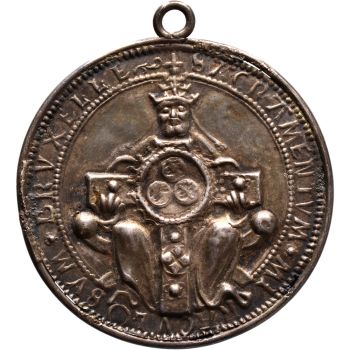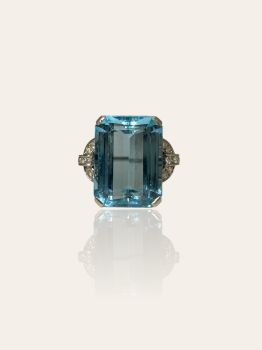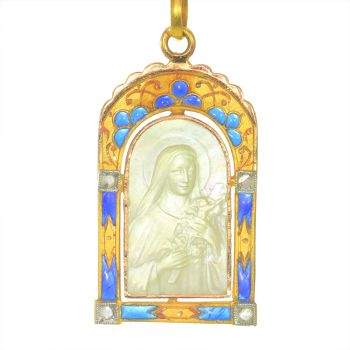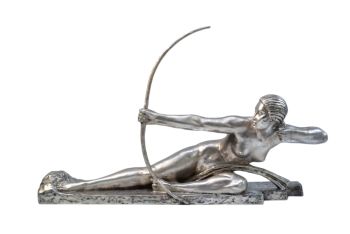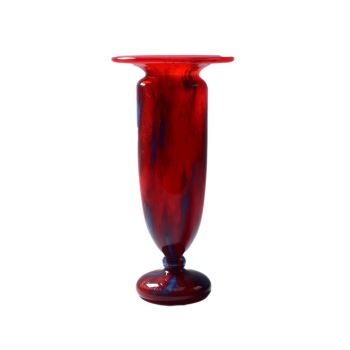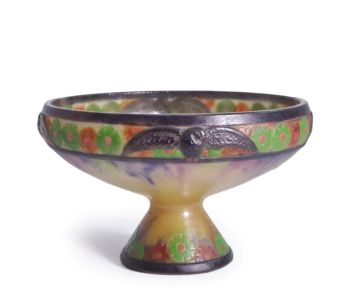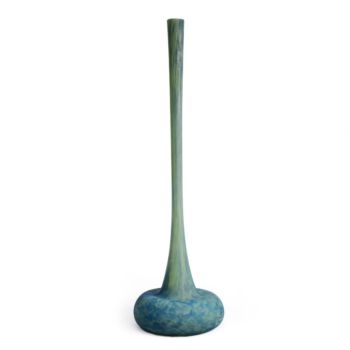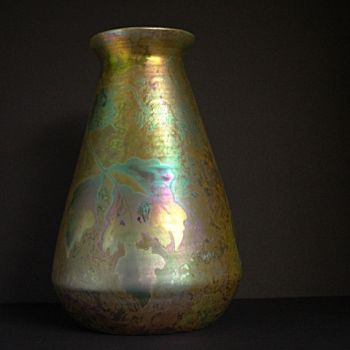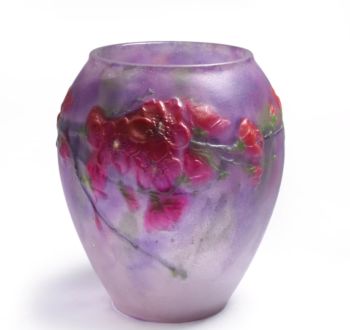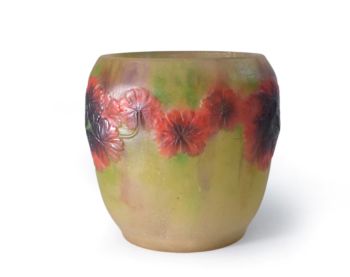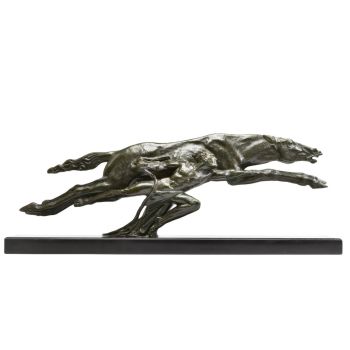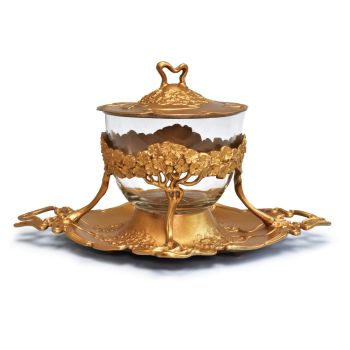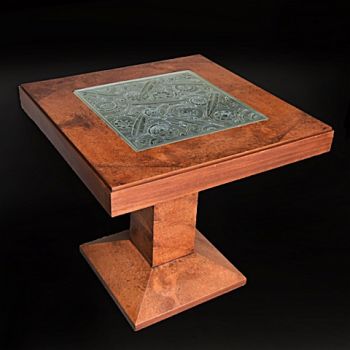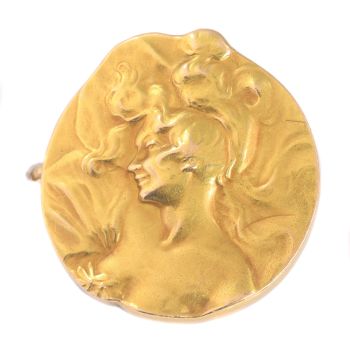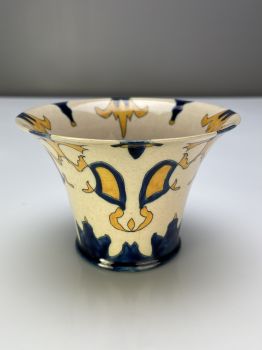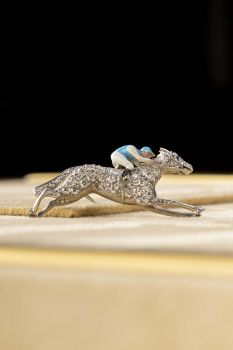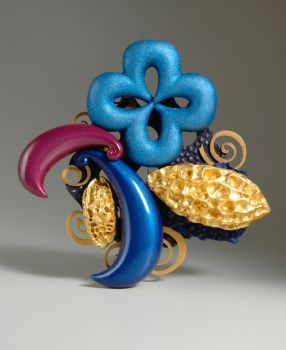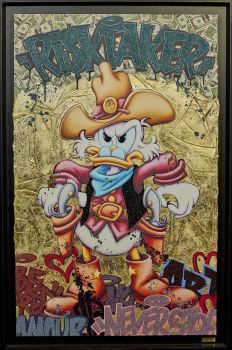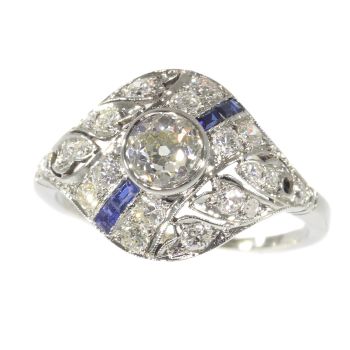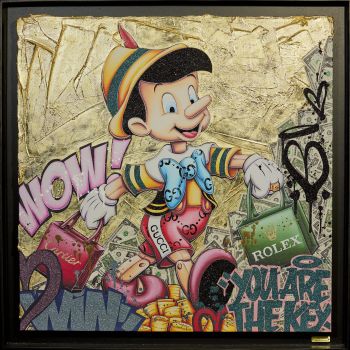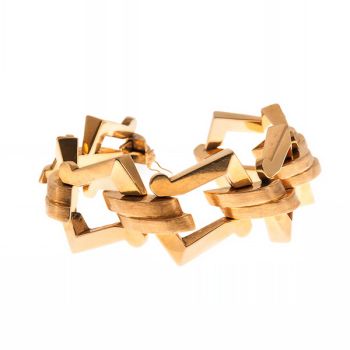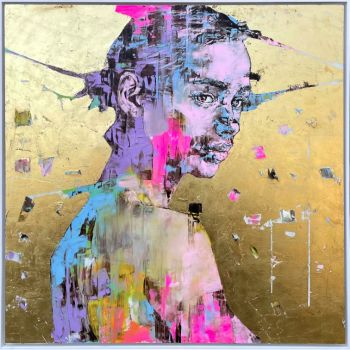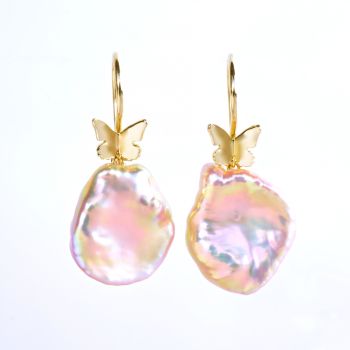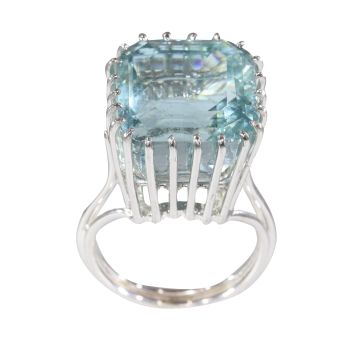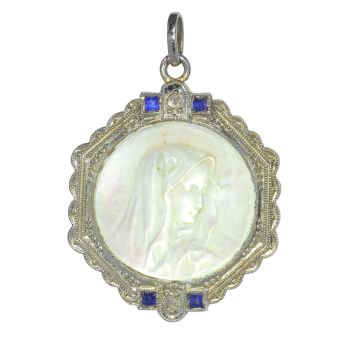Broche de ouro antigo em estilo Art Nouveau retratando o amor na primavera 1900
Artista Desconocido
Oro
€ 3.750
Adin Fine Antique Jewellery
- Sobre la obra de arte
This 18K yellow gold Art Nouveau medallist brooch gleams of a warming scenery of engraved Lilies of the valley enclosing a woman's bust with six rose cut diamonds as her necklace, brooch and hairclip. As nature revives with the blossoming of the Lilies, so will the disarming allure of this romantic antique jewel enlighten your shared path in affection and honour.
Antique jewelry object group: brooch
Condition: excellent condition
- (more info on our condition scale)
Country of origin: France
Style: Between Victorian and Art Nouveau - Victorian decorative arts refers to the style of decorative arts during the Victorian era. The Victorian era is known for its eclectic revival and interpretation of historic styles and the introduction ofcross-cultural influences from the middle east and Asia in furniture, fittings, and Interior decoration. Victorian design is widely viewed as having indulged in a regrettable excess of ornament.
The Arts and Crafts movement, the aesthetic movement, Anglo-Japanese style, and Art Nouveau style have their beginnings in the late Victorian era. Art Nouveau (French for New Style) is an international movement and style of art, architecture and applied ar - especially the decorative arts - that peaked in popularity at the turn of the 20th century (1890–1905).
The name "Art Nouveau" is French for "new art". It is also known as “Jugendstil”, German for "youth style", named after the magazine Jugend, which promoted it, and in Italy, Stile Liberty from the department store in London, Liberty & Co., whichpopularised the style. A reaction to academic art of the 19th century, it is characterized by organic, especially floral and other plant-inspired motifs, as well as highly stylized, flowing curvilinear forms.
Art Nouveau is an approach to design according to which artists should work on everything from architecture to furniture, making art part of everyday life.
- See also: late-Victorian, early Art Nouveau, eclecticismor more info on styles
Style specifics: - Medaillist Revival (in the The Belle Époque towards Art Nouveau) In 1886 Emile Olive (1853-1902) launched the medal-jewel with Vernier's Diane which resulted in the revival of medaillist's art in France.
Period: ca. 1900
- (events and facts in 1900)
Source of inspiration: Romanticism
Theme: A woman surrounded by lily of the valley flowers and roses
Material: 18K yellow gold
- (more info on precious metals)
Extra information: Lily of the Valley - The Lily of the Valley is most of seen as symbol for recurrent luck and happiness. Legend tells of the affection of a lily of the valley for a nightingale that did not come back to the woods until the flower bloomed in May. Othernames include May lily, May bells, lily constancy, ladder-to-heaven, male lily, and muguet (French)
Diamonds:Six rose cut diamonds. We do not have the weight of the diamonds which is normal in our trade when it comes to rose cuts.
Birthstones: Diamond is the birthstone (or month stone) for April.
- (more info on birthstones)
Monogram: EF or BF
Hallmarks: The French control mark for 18K gold representing an eagle's head that was in use in France from about 1838.
- (more info on hallmarks)
Dimensions: 3,06 cm (1,20 inch) x 2,50 cm (0,98 inch)
Weight: 10,70 gram (6,88 dwt)
Reference Nº: 14247-0083
Copyright photography: Adin, fine antique jewelry
- Sobre el artista
Puede suceder que un artista o creador sea desconocido.
Algunas obras no deben determinarse por quién está hecho o por (un grupo de) artesanos. Algunos ejemplos son estatuas de la Antigüedad, muebles, espejos o firmas que no son claras o legibles, pero también algunas obras no están firmadas en absoluto.
También puedes encontrar la siguiente descripción:
•"Atribuido a …." En su opinión, probablemente una obra del artista, al menos en parte.
•“Estudio de….” o “Taller de” En su opinión, una obra ejecutada en el estudio o taller del artista, posiblemente bajo su supervisión
•“Círculo de…” En su opinión, una obra del período del artista que muestra su influencia, estrechamente asociado con el artista pero no necesariamente su alumno.
•"Estilo de …." o “Seguidor de…”. En su opinión, una obra ejecutada al estilo del artista pero no necesariamente por un alumno; puede ser contemporáneo o casi contemporáneo
•"Manera de …." En su opinión una obra al estilo del artista pero de fecha posterior
•"Después …." En su opinión, una copia (de cualquier fecha) de una obra del artista
•“Firmado…”, “Fechado…” o “Inscrito” En su opinión, la obra ha sido firmada/fechada/inscrita por el artista. La adición de un signo de interrogación indica un elemento de duda.
•“Con firma…”, “Con fecha…”, “Con inscripción…” o “Lleva firma/fecha/inscripción” en su opinión la firma/fecha/inscripción ha sido añadida por alguien que no es el artista
¿Está interesado en comprar esta obra de arte?
Artwork details
Related artworks
- 1 - 4 / 12
Firm Erhard & Sohne, Schwäbisch Gmünd
Erhard und Söhne – Jugendstil intarsia klok – 1908 / 19091900 - 1909
Precio a consultarAntiques Emporium
1 - 4 / 24- 1 - 4 / 24
Artista Desconocido
A superb Indonesian royal gem-set gold overlaid silver betel box19th century
Precio a consultarZebregs & Röell - Fine Art - Antiques
1 - 4 / 24- 1 - 4 / 12












